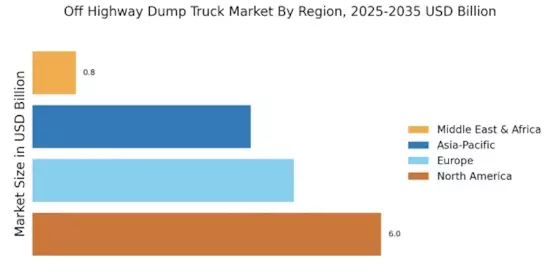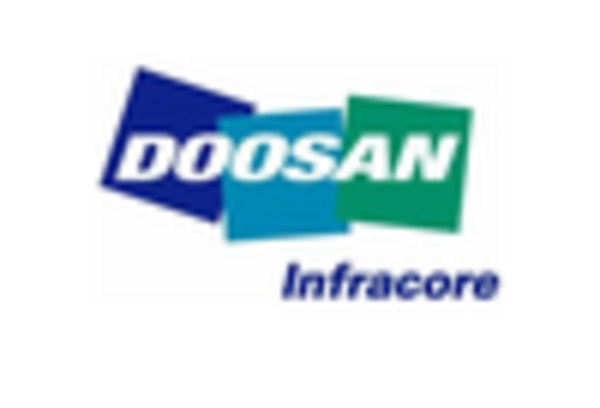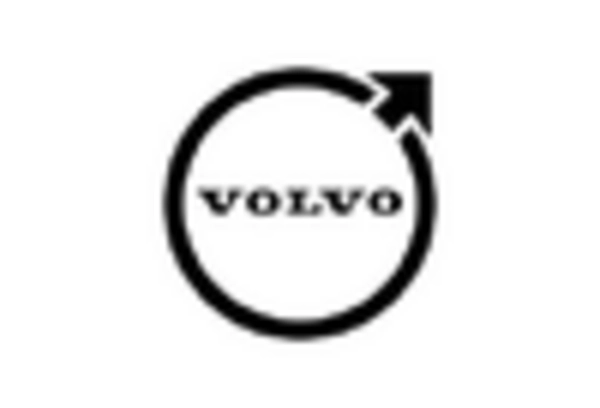The Off Highway Dump Truck Market is currently characterized by a dynamic competitive landscape, driven by increasing demand for efficient and robust construction and mining equipment. Key players such as Caterpillar (US), Komatsu (JP), and Volvo (SE) are at the forefront, each adopting distinct strategies to enhance their market positioning. Caterpillar (US) emphasizes innovation through advanced technology integration, focusing on automation and telematics to improve operational efficiency. Meanwhile, Komatsu (JP) is pursuing regional expansion, particularly in emerging markets, to capitalize on the growing infrastructure development. Volvo (SE) appears to be concentrating on sustainability, with a commitment to reducing carbon emissions in its manufacturing processes, thereby appealing to environmentally conscious consumers. Collectively, these strategies not only enhance individual company profiles but also intensify competition within the market, as firms strive to differentiate themselves through technological advancements and sustainable practices.
In terms of business tactics, companies are increasingly localizing manufacturing to reduce costs and improve supply chain efficiency. This approach is particularly relevant in a moderately fragmented market where several players vie for market share. The collective influence of these key players shapes a competitive structure that encourages innovation and responsiveness to market demands, fostering a climate where agility and adaptability are paramount.
In August 2025, Caterpillar (US) announced the launch of its latest autonomous dump truck model, which is designed to enhance safety and productivity on job sites. This strategic move underscores Caterpillar's commitment to leading the market in automation technology, potentially setting a new standard for operational efficiency in the industry. The introduction of this model is likely to attract significant interest from large-scale mining and construction companies looking to optimize their operations.
In September 2025, Komatsu (JP) revealed its plans to invest in a new manufacturing facility in Southeast Asia, aimed at increasing production capacity for off-highway vehicles. This investment reflects Komatsu's strategy to strengthen its foothold in rapidly growing markets, allowing the company to better serve local demand and reduce lead times. Such a move may enhance Komatsu's competitive edge by ensuring a more responsive supply chain and localized production capabilities.
In July 2025, Volvo (SE) launched a new line of electric dump trucks, marking a significant step towards sustainable construction practices. This initiative aligns with global trends towards electrification and sustainability, positioning Volvo as a leader in environmentally friendly technology. The introduction of electric models could potentially reshape customer preferences, as companies increasingly seek to reduce their carbon footprints and comply with stricter environmental regulations.
As of October 2025, the Off Highway Dump Truck Market is witnessing a pronounced shift towards digitalization, sustainability, and the integration of artificial intelligence. Strategic alliances among key players are becoming increasingly common, facilitating the sharing of technology and resources to enhance competitive positioning. Looking ahead, it is likely that competitive differentiation will evolve from traditional price-based competition to a focus on innovation, technological advancements, and the reliability of supply chains. This transition suggests that companies that prioritize these aspects will be better positioned to thrive in an increasingly complex market environment.


















Leave a Comment